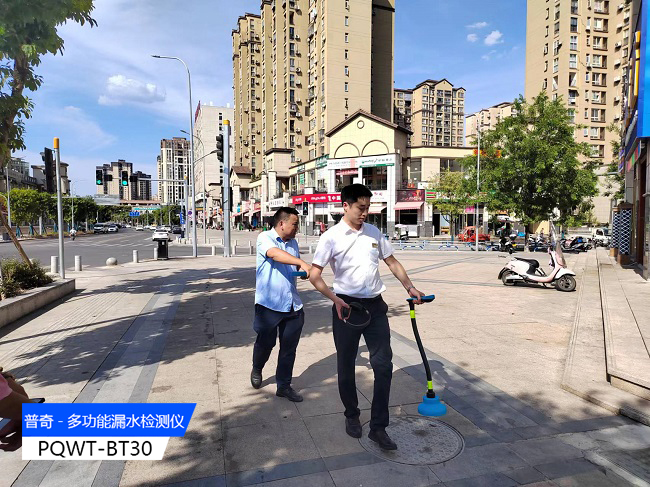In the process of urbanization, pipeline leakage detector plays an important role in ensuring the normal operation of urban water supply network. In this paper, we will focus on the pipeline leakage detector in the network leakage detection in the three-step process, so that readers can better understand and master the operation of the equipment.

First, site investigation
In the application of pipeline leakage detector, site investigation is the first step. First of all, it is necessary to understand the design, construction drawings and actual operation of the pipeline. Through a comprehensive understanding of the direction of the pipeline, material, length, leakage, pipeline pressure and depth of burial and other details, for the subsequent leakage detection to provide the necessary information support.
In the site investigation, the following points need to be noted:
1. Along the pipeline route to observe one by one whether the pipeline, valves, hydrants and other peripheral areas are visibly wet, ground cracking, ground subsidence, ground collapse, long-term heavy pressure areas, uneven settlement areas, vegetation is particularly lush, to be used as a key target of investigation.
2. Open the covers of all valve wells, sewage wells, rainwater wells, electric wells and other wells around the pipeline and observe whether there is any unidentified accumulation of water or water flow in the wells.
3. Try to avoid periods of high noise interference, it is recommended that the operation be carried out at night in a relatively quiet, low water use peak hours.

Second, the external network leakage detection process
Outer network leakage detection is the use of pipeline leakage detector on the urban water supply network detection process. Specific processes are as follows:
1. Pipe leakage detector sensors placed in the pipeline above, according to a certain spacing for detection. In the detection process, you need to pay attention to the pipeline surrounding environment, such as buildings, roads, green belts and other factors that may have an impact on the detection results.
2. Adjust the pressure of the pipe leakage detector to achieve the best detection effect. Generally speaking, the pressure needs to reach 3-5 kilograms to achieve the best leakage detection effect.
3. In the detection process, attention needs to be paid to the use of the megaphone. Listening device can amplify the sound of water leakage to help detectors capture the leakage signal. At the same time, you also need to pay attention to the frequency and intensity of the signal to determine the location of the leak and the size of the leak.

4. After discovering the suspected water leakage area, retesting and localization are required. The exact location of the leakage point can be determined by multiple detections and comparing the signal strengths of different areas. At the same time, other auxiliary equipment such as tracer gas detectors can also be used to determine the location of the leakage point.
In the process of leak detection in the external network, the following points need to be noted:
1. Different detection methods need to be used for metal pipes and other non-metallic pipes. Metal pipes can be detected by knocking method or magnetic line method, while non-metallic pipes need to be detected by acoustic wave method or electric field method.
2. Different sensors and detection methods are needed for pipes made of different materials. For example, for PVC pipes, ultrasonic sensors should be used for detection, and for steel pipes, vibration sensors should be used for detection.
3. In the detection process need to pay attention to avoid the influence of external interference. For example, vehicle traffic, people walking, etc. may have an impact on the detection results. Therefore, it is necessary to carry out the detection work in a relatively quiet period of time.
4. Precise positioning is needed when locating the leakage point. It can be verified and localized by methods such as drilling or excavation. At the same time need to pay attention to the impact on the surrounding environment, such as roads, buildings, etc. need to be taken into account.
5. In the use of pipe leakage detector need to pay attention to the maintenance and repair of equipment. For example, regular cleaning sensors, battery replacement, etc. are necessary to ensure the normal operation of the equipment.
6. Need to pay attention to safety issues in the network leakage detection. For example, you need to wear a helmet and protective equipment when entering small spaces such as wells; when working in high-voltage areas, you need to pay attention to preventing electric shock and other accidents.
7. Outer network leakage detection also need to pay attention to the impact of the weather. For example, when working in rainy or snowy days, you need to pay attention to the moisture-proof and cold-proof measures of the equipment; when working in hot weather, you need to pay attention to the heat dissipation measures of the equipment.
8. Outer network leakage detection also need to pay attention to staffing issues. Need to have experienced technicians to operate and guide; at the same time also need to be equipped with the necessary communication equipment and transportation in order to facilitate on-site communication and coordination.








